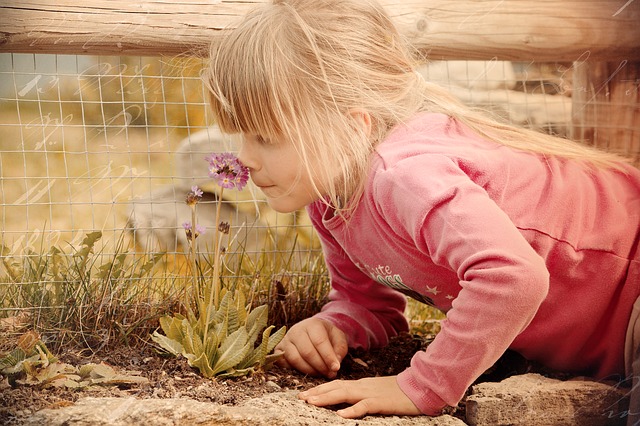 I am a visual person by nature. I love wearing bright colorful clothes. I dream in color. I give fantastic directions with landmarks and street names, and whenever I travel for work, I like to walk in the cities I’m visiting, so I can develop a memory of the walk and retrace my steps without a map the next time I visit.
I am a visual person by nature. I love wearing bright colorful clothes. I dream in color. I give fantastic directions with landmarks and street names, and whenever I travel for work, I like to walk in the cities I’m visiting, so I can develop a memory of the walk and retrace my steps without a map the next time I visit.
My visual memories stretch as far back as my toddler years. I remember being not much older than my daughter, Ilse, is now, riding in the back of my father’s green Mazda with my sister Cherie or spending an afternoon watching my mom put rollers in her hair for a party. As much as I cherish the ability to recall the visual elements of these memories, I also cherish the scents surrounding them: the “new car” smell of my dad’s Mazda or the Gucci perfume my mom wore on special occasions.
Our sense of smell is such a powerful thing because all of our other senses are engaged by it. As my daughter learns manners, and as I engage her curiosity with cooking, singing, and make-up, I’m also teaching her how to use her sense of smell to enrich her learning.
Seeing and Smelling
Now that it’s spring, warmer sunnier weather should be on its way. In as much I as look for the visual cues of the changing season, like brighter days, I also smell them. Spring in San Francisco is marked by rain – I smell damp leaves and sewer drains. In the summer, I note the smell of warm concrete and sea air. Whenever I walk around the neighborhood with my daughter, I like to talk about the things I smell so Ilse can start to recognize them as well. In the winter, we will look at the pink flowers of the cherry blossom trees that line Laguna Street and pick one for her to smell. Sometimes, she will pick up a random leaf on the sidewalk and smell it. Sometimes, she just raises an eyebrow and laughs at me when I tell her what I think it smells like. While the seasonal changes in San Francisco are subtle, I still want Ilse to know that they exist if she looks closely for them.
Hearing and Smelling
Living in San Francisco subjects us to a bevy of sounds of the daily grind, like street cleaning, garbage pick-up, earthquake siren testing, church bells, and construction drilling. I love them! They remind me that we live in a city. These sounds are coupled with their own unique smells, like the soapy water smell of the street cleaning or the smell of rotting garbage on garbage pick-up day. Shortly after Ilse turned one, we started teaching Ilse about the different city sounds and smells. She understands that the blaring sound of a siren means someone needs help and that garbage pick-up day is usually “stinky.” Sometimes we smell things before we hear them (like smoke from a fire) or hear things before we smell them (like the grunting sound of child pooping). In any case, it’s important for us to be aware that the things we hear can have associated smells, even if those odors are unpleasant. If Ilse can learn to identify both good and harmful smells, then she will know how to react to them.
Tasting and Smelling
Are tasting and smelling one in the same? Why is it that when we have stuffy noses food does not taste the same? Taste and smell are intertwined because they use the same nerves to detect odors that send messages to the brain telling us what they are. When I am ill, nothing tastes right. It’s like my taste buds are numb. Likewise, I experience the same sensation with my sense of smell. When I am ill and can’t breathe, my sense of smell is dulled. After this latest round of stuffy noses passes in our house, Ilse and I will resume smelling foods when I cook or when we shop for produce. Getting her excited about food through smelling and tasting what we’re cooking will help her make better food choices as she gets older.
Touching and Smelling
Until I became an aunt and later a mom, I had always found it funny that my mom, aunts, and grandmothers would give me smelling kisses or smelling hugs. They would embrace me, give me a kiss on the cheek, and smell me at the same time. It’s certainly a cultural thing, one that I have always associated with my Filipino heritage. Nevertheless, it’s one I embrace wholeheartedly. In giving this kind of affection, I am demonstrating to that person how much they mean to me, particularly those whom I am closest to. Last November, when our little family visited our dearest friend Sharon, it was a joy to just hold her hand and give her a smelling hug. With my daughter and husband, not a day goes by without smelling kisses or hugs. It’s just a small way of expressing my affection for them.
I also couple this affection with words, so Ilse understands why I gave a hug (or a kiss when appropriate). Context is as important as the action itself. The senses of touching and smelling are so visceral that it can hearken back to the moment our of own child’s birth, our initial skin-to-skin contact, and that new baby smell.
I can spend hours talking about the sense of smell because it ties into every one of my memories. It might explain my obsession with collecting perfumes (which I will save for another article). Whether it’s the powdery scent of Ilse’s shampooed hair or the aroma of burnt cookies in the oven, my life is so much more enriched by the ability smell. As Ilse continues to explore her growing world, I want her to recognize that the ability to smell makes life that much more exciting.



















